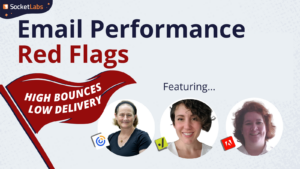Please welcome Jennifer Nespola Lantz!
Jennifer Nespola Lantz likes email. She’s been doing email things since 2005 like troubleshooting deliverability problems, and loves to educate on this thing called deliverability, which she does today at Kickbox as their VP of Industry Relations and Deliverability.
Jennifer is fun. Overall joy to be around. When you read her answers, you’ll understand exactly why she’s so well-liked; it’s not just her knowledge of email and its trends, but her relatable way of explaining the concepts relevant today (and tomorrow.) Carry on and read her responses. You’ll laugh. You’ll cry. You’ll FEEL.
How do you see email fitting into the marketing mix in 2025?
Email. Will. Be. Dead.
Kidding, although I wouldn’t be surprised to see a fatigue in email as we move into 2025. Even with all the sorting I put in place, it’s still a LOT to manage. Sometimes I wish I could just turn it all off, but dag nabbit, I want that coupon!
I’m sure I’m not alone.
This could have us seeing more service/product offerings around mailbox management – more separation of streams or more of a push around secondary emails/aliases. Perhaps tabs on steroids, a big ol’ pot of default email addresses you can use that automatically sort, the world is our oyster!
Why this potential fatigue? Because email is all the rage (and has been for a while) and with the push for more and more companies to be accessible online, email continues to swell. Which means it’s harder and harder to manage our inboxes and sort through the absolute must haves from the “I’ll go hunting for you when I have time (or money.)”
We’ve already seen this with Gmail’s tabs, Yahoo’s sorting features for shopping, aliased emails and secondary emails. But even with that, it’s still a plucky ton of email. Maybe by 2025, one of the services will come up with a more formalized way to do this while also keeping the core email protected (not just from the onslaught of email), but the potential phishing and spoofing concerns that come with data breaches (Apple’s doing this with “Hide My Email.”)
It’d be nice to know that only the email you use for 1:1 is out there with friends and not tied to the last 60 places you purchased from that could be in the news next. Hmmm, maybe the next offering should also include a way to update these customized email addresses across all accounts…









